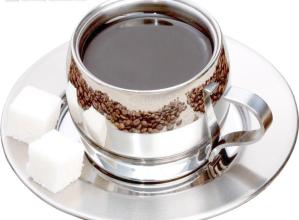Indonesian boutique Manning Coffee Flavor taste Manor introduces the price of Indonesian coffee
Coffee flower
Sunda Hejo processing plant is located in Bandung, West Java Province, the main coffee growing range is Malabar, about 1650 meters above sea level, volcanic soil (where the coffee grown in volcanic soil has no smoky taste), spring water, the mountain area has a large temperature difference between day and night, which is very suitable for coffee cultivation. Cooperative farmers are mainly local village residents, about 100 people, with a coffee processing plant. It is mainly planted with Typica, Caturra, Tim-Tim, Catior, S795 and other varieties, and the main treatment methods are full washing, semi-washing, honey treatment, solarization, a small amount of Indonesian traditional wet planing and many mixed treatments.
The significance of the Sunda Hejo processing plant as for the Klasik Beans cooperative is that there can be many experiments on the treatment of Indonesian coffee. The cultivation of Indonesian coffee originated from the rule of the Netherlands. At that time, the Dutch introduced Yemeni coffee to Indonesia for planting, and the primary place of planting is today's Sunda region, so it can almost be said that Sunda in Java is the starting point of Indonesian coffee. Before the establishment of the Klasik Beans cooperative, Java coffee mainly came from the four major processing plants in East Java, and farmers in the Sunda producing area in West Java still maintained the model of planting, processing and selling to raw bean merchants in small quantities per household. It is such a mode of small household planting and treatment that in the era of rapid development of coffee variety hybridization and variation, West Java is still planting primitive Typica trees transplanted here by early Dutch rulers in isolation from the rest of the world.
This time in the processing plant, lucky cup tested the Typica treated by Michael and cooperative farmers. They used three treatments, among which the honey-treated Typica was stunning, which was objectively higher in quality than most Panamanian rosy summer coffee in this season.
The Typica is transplanted from Gulali and is also marked Typica Gulali. It has a history of more than 80 years. This is the first time that cooperatives have introduced this variety and planted it in the Malabar Mountains of Sunda Hejo. It has been planted for 3-5 years and has not yet been mass-produced.
Of course, the purpose of this experiment is to select the processing method for the next quarter of Typica production, so it's not surprising that full-washed Typica tastes a little like fermentation failure.
This Typica and more about Indonesian coffee varieties and handling will be introduced in more detail in the next chapter, including Mantenin, which we often see.
This is a summary of the history of coffee cultivation in Indonesia and a brief introduction to Klasik Beans cooperatives.

Important Notice :
前街咖啡 FrontStreet Coffee has moved to new addredd:
FrontStreet Coffee Address: 315,Donghua East Road,GuangZhou
Tel:020 38364473
- Prev

Introduction to the characteristics of Ecuadorian Coffee Manor producing area Ecuadorian coffee flavor and taste fine coffee beans
Ecuador is at the center of the world, which is why Ecuador is called the equatorial country. Ecuador's top coffee is also famous for its superior geographical location. A two-hour drive east from Quito, the capital of Ecuador, you can reach the tropical jungle and west to the seaside. Ecuador is one of the most species-rich countries in the world. You are in any direction
- Next

Panamanian Coffee Taste introduction to Panamanian Coffee Flavor Manor
Nowadays, there are many ways of washing, but generally speaking, the floating beans are removed after the coffee fruit is picked, then the pulp is removed, and then the coffee beans are soaked in a fermentation trough. The enzymes in the water will soften the mucus attached to the peel of the coffee beans. Natural yeast will break down the sugar in the mucus, a process called fermentation. After the fermentation is finished, move the coffee beans to the sun field to dry.
Related
- Detailed explanation of Jadeite planting Land in Panamanian Jadeite Manor introduction to the grading system of Jadeite competitive bidding, Red bid, Green bid and Rose Summer
- Story of Coffee planting in Brenka region of Costa Rica Stonehenge Manor anaerobic heavy honey treatment of flavor mouth
- What's on the barrel of Blue Mountain Coffee beans?
- Can American coffee also pull flowers? How to use hot American style to pull out a good-looking pattern?
- Can you make a cold extract with coffee beans? What is the right proportion for cold-extracted coffee formula?
- Indonesian PWN Gold Mandrine Coffee Origin Features Flavor How to Chong? Mandolin coffee is American.
- A brief introduction to the flavor characteristics of Brazilian yellow bourbon coffee beans
- What is the effect of different water quality on the flavor of cold-extracted coffee? What kind of water is best for brewing coffee?
- Why do you think of Rose Summer whenever you mention Panamanian coffee?
- Introduction to the characteristics of authentic blue mountain coffee bean producing areas? What is the CIB Coffee Authority in Jamaica?

